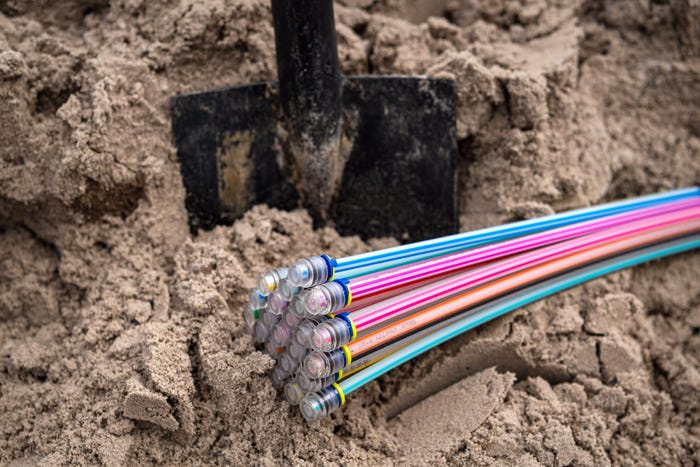GFiber boosts focus on the broadband experience
Speeds, performance and pricing will always be important to broadband service providers, but GFiber is also laying the groundwork to enhance the broader experience, says John Keib, GFiber's chief technology and product officer.

Speeds and pricing remain important pieces of the broadband game. But service providers are also continuing to beef up their ability to improve the broader experience with premium, whole-home Wi-Fi and other services and applications that can be offered on top of (or alongside) the primary broadband connection.
GFiber, the unit formerly branded as Google Fiber that offers multi-gigabit speeds today across several US markets, is putting much more focus on the broader broadband experience alongside its core speeds. And rather than just checking the speed to the home, GFiber is also doing more analysis to determine how the service is performing inside the home – and then sharing those details with its customers.
Some of that starts with Wi-Fi. In a blog item posted Monday (May 20), GFiber Chief Technology and Product Officer John Keib noted that the service provider has retired its legacy routers and is moving to Wi-Fi 6E for all new customers. It is also replacing its older network boxes with new gear, and is providing mesh extenders for gigabit-plus services for no added cost.
Update: GFiber has begun to deploy Wi-Fi 7 for its 20 Gbit/s lab work in Raleigh-Durham, and plans to extend Wi-Fi 7 support to its other multi-gigabit tiers later this year.
In tandem, GFiber is also planning to introduce a "personalized home networking quality score" in the coming months via the GFiber App. The app will also provide feedback on where the customer should place extenders to optimize home Wi-Fi coverage.

(Source: GFiber)
The general idea is to use that data analysis to keep close tabs on the health of the home network and to share those details with customers, Keib said Thursday (May 23) during his headliner discussion at the Informa Tech/Light Reading Network X event in Irving, Texas.
That new feature will also help customers feel good about the broadband performance they are paying for, and positions GFiber to offer enhanced services on top of the core connections, he said.
"We're not just measuring speed to the home at that point. We want to measure the speed in the home at that point," Keib explained. "And we want to make sure we have that visibility from an error-rate standpoint... to make sure that these homes are healthy all the time."
GFiber will also focus on those capabilities amid the company's general decision not to lean on promotions, while steering clear of contracts and data caps.
"We don't do promotions; we don't do discounts," Keib said. "Why is that? We don't do it because our existing customers need to be treated as well as the customers we're trying to attract."
And rather than relying on price promos, the company would rather see customers upgrade to higher speeds when they are needed, he said.
GFiber does not report subscriber numbers, but it appears to be holding its own as customer growth slowed across the entire US broadband sector in the first quarter of 2024.
"GFiber is a company that's growing fast" as it continues to get more aggressive in its legacy markets and expands into new ones, noted Keib. Just this week, GFiber announced it is exploring a fiber network build in and around Seattle, where it is currently serving customers with its Webpass point-to-point wireless platform.
Network upgrades afoot
GFiber also provided an update on its network upgrade plan. By the end of 2024, the company expects to put the vast majority of its customers on XGS-PON infrastructure.
"We're very much committed to this," Keib said of the XGS upgrade, noting that Google Fiber is using it in all new markets and new connects and will, over time, shift customers to the technology as they migrate to faster speed tiers.
GFiber is also deploying 25G PON tech from Nokia to put the company in position to offer symmetrical 20 Gbit/s services in all fiber markets by the end of 2024 as well.
"We think it [the new 20-Gig offering] has a lot of value, especially in the next year or two," Keib said, noting that it could be used to serve large commercial customers for backhauling and for large-scale multiple-dwelling units.
But it won't stop there. Keib reiterated that GFiber is already heading toward a goal to deliver speeds of 100 Gbit/s.
Read more about:
Network XAbout the Author(s)
You May Also Like














